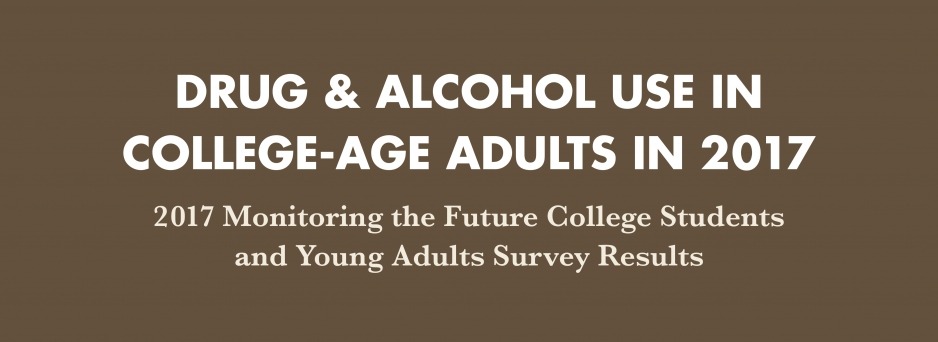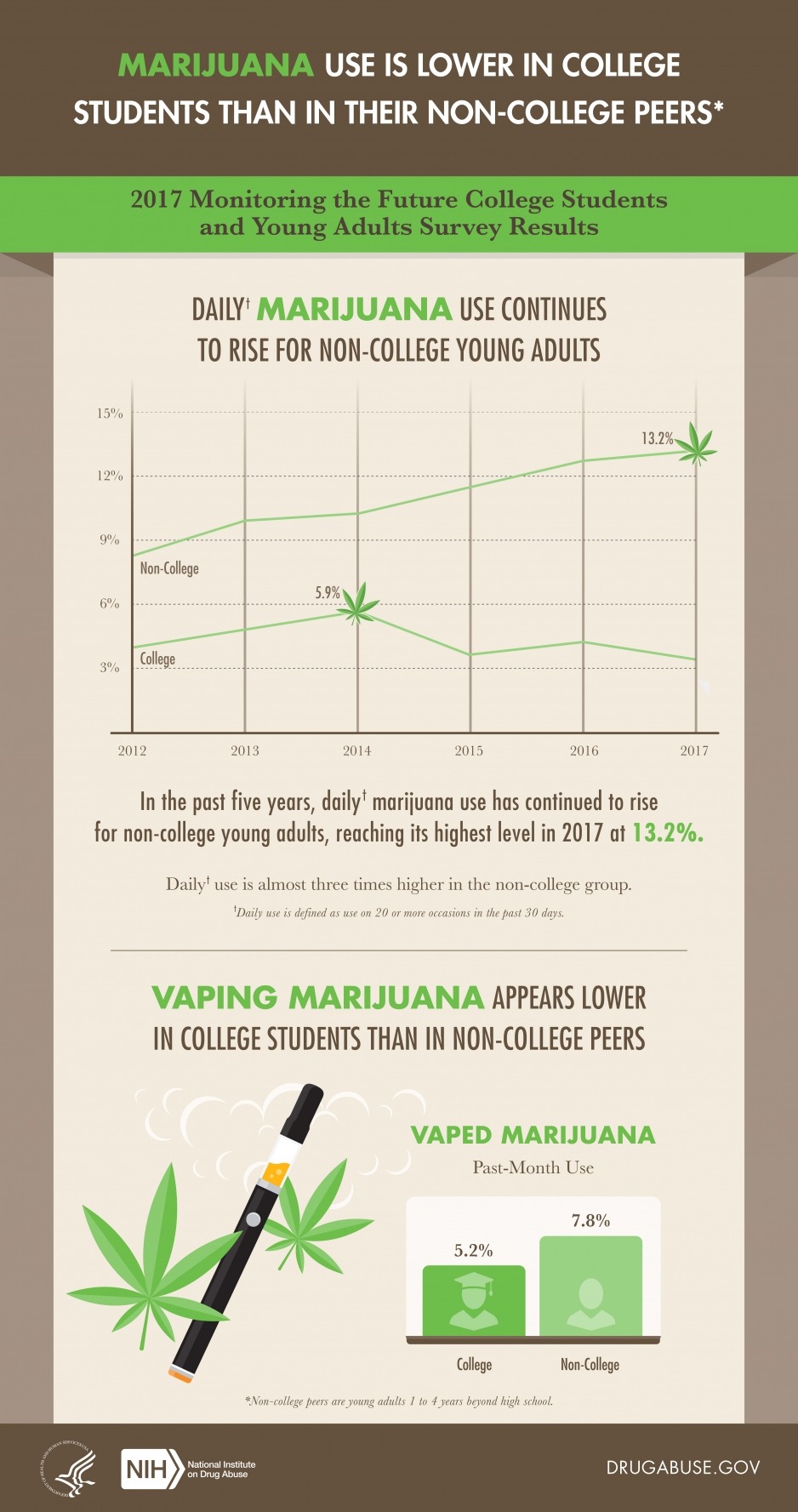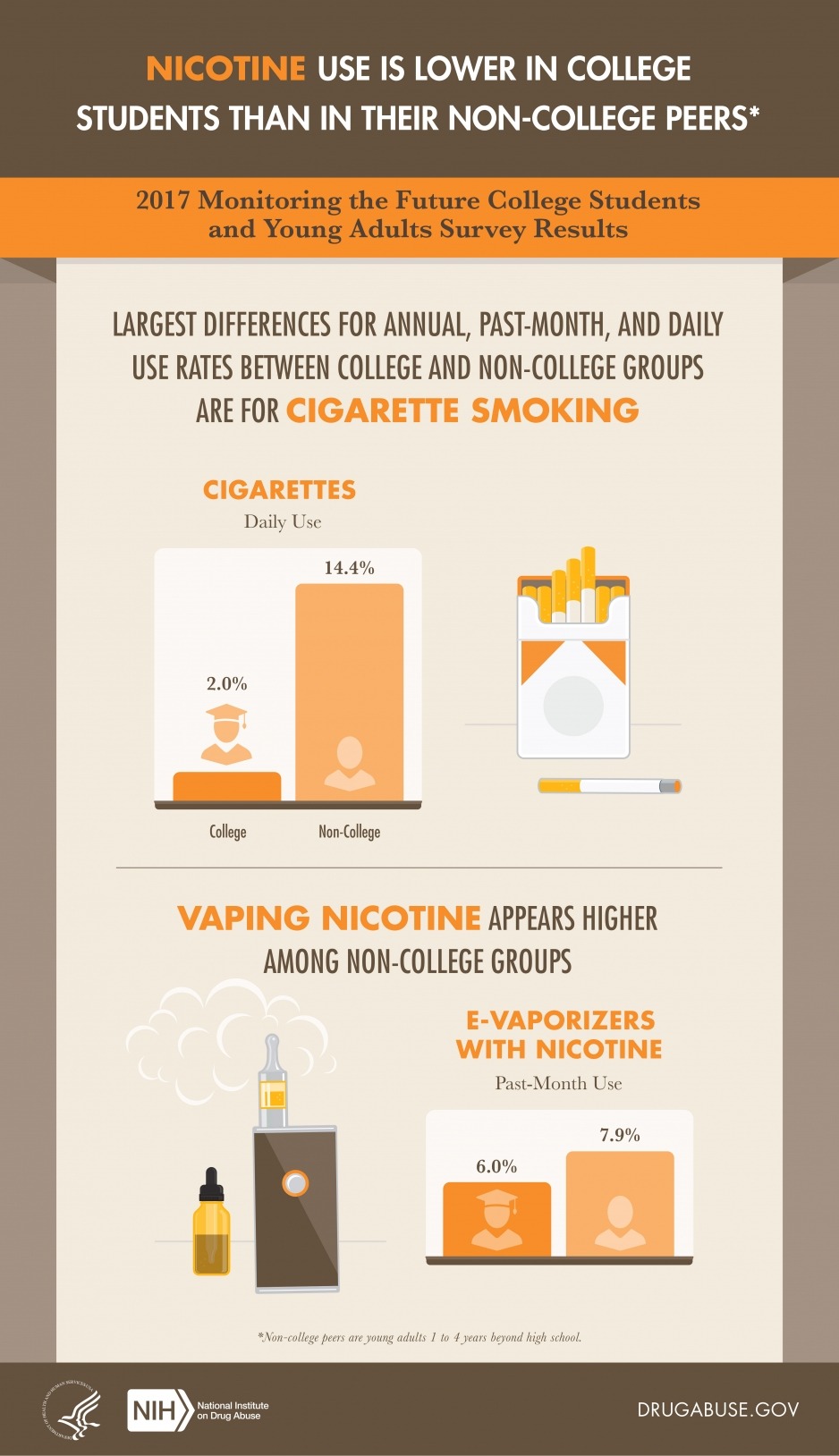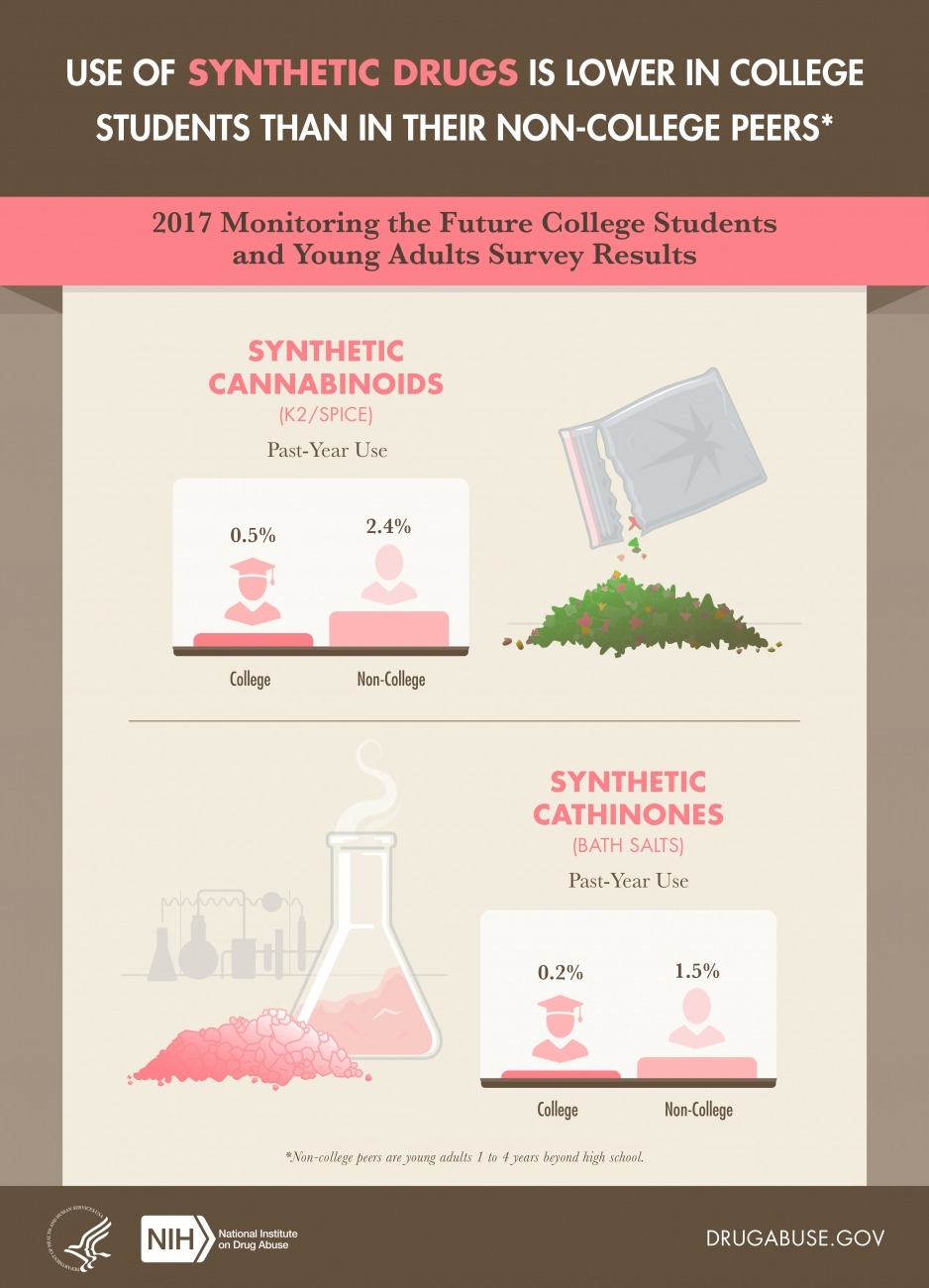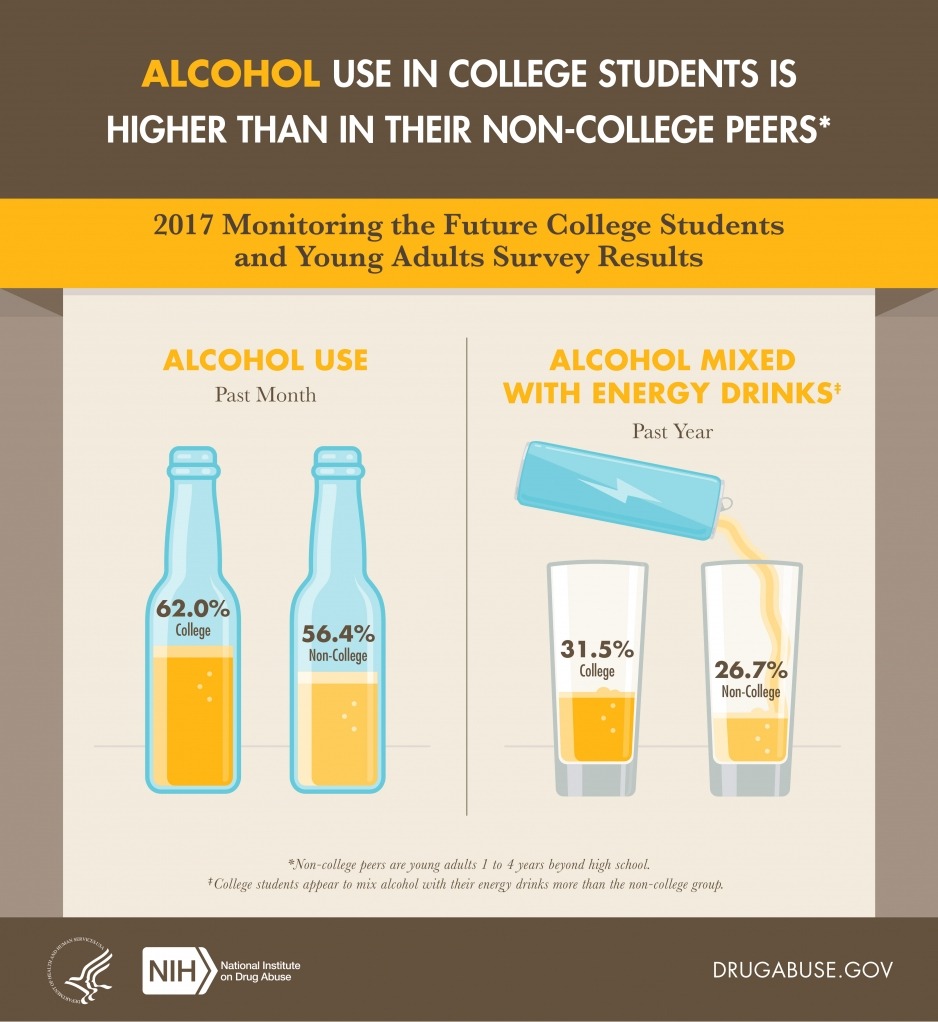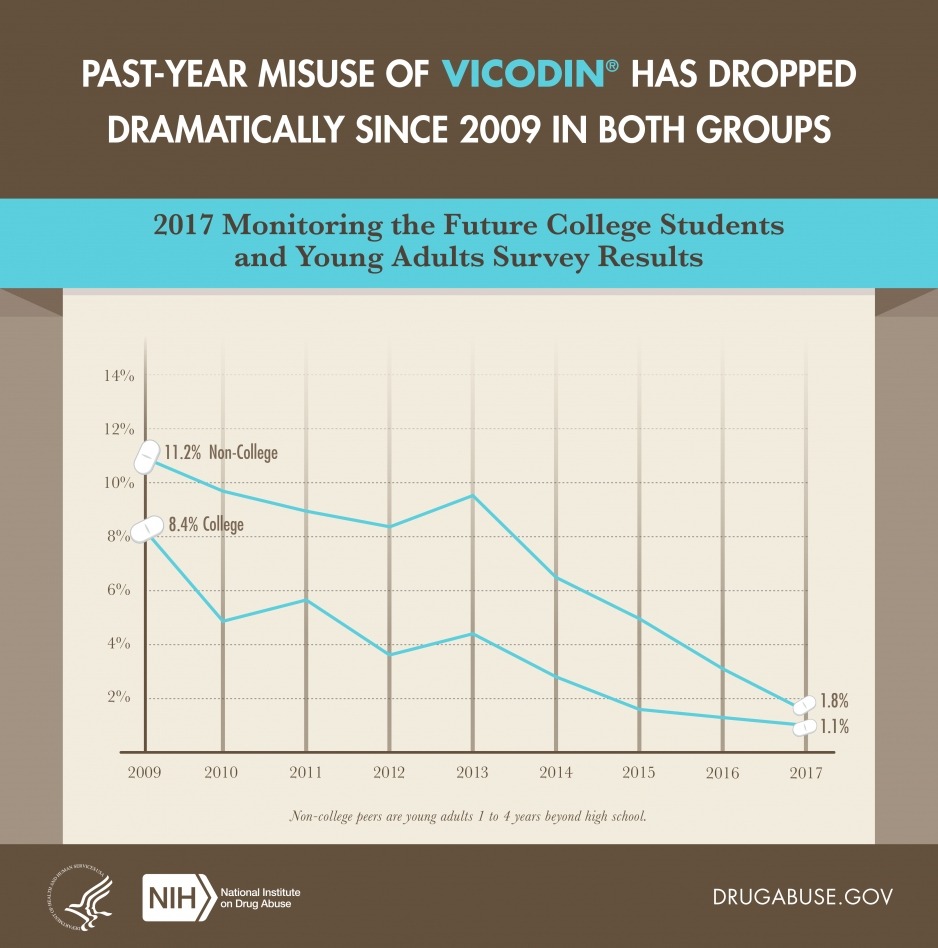The 2017 Monitoring the Future College Students and Young Adults survey shows trends in the use of marijuana, alcohol, nicotine, and synthetic drugs in college students and non-college peers.
Panel 1: Marijuana Use is Lower in College Students than in their Non-College Peers
Daily* Marijuana Use Continues to Rise for Non-College Young Adults
In the past five years, daily* marijuana use has continued to rise for non-college young adults, reaching its highest level in 2017 at 13.2 percent. In contrast, daily marijuana use in college student reached its peak in 2014 at 5.9 percent.
Daily* use is almost three times higher in the non-college group.
*Daily use is defined as use on 20 or more occasions in the past 30 days
Vaping Marijuana Appears Lower in College Students Than in Non-College Peers
In 2017, 7.8 percent of non-college young adults vaped marijuana in the past month, compared with 5.2 percent of college students.
Panel 2: Nicotine Use is Lower in College Students than in Their Non-College Peers
Largest Differences for Annual, Past-Month, and Daily Use Rates Between College and Non-College Groups are for Cigarette Smoking
14.4 percent of non-college young adults smoked cigarettes daily, compared with 2.0 percent of college students.
Vaping Nicotine Appears Higher Among Non-College Group
7.9 percent of non-college young adults used e-vaporizers with nicotine in the past month, compared with 6.0 percent of college students.
Panel 3: Use of Synthetic Drugs is Lower in College Students Than in Their Non-College Peers
In the past year, 2.4 percent of non-college young adults vs. 0.5 percent of college students used synthetic cannabinoids (K2/Spice).
1.5 percent of non-college young adults vs. 0.2 percent of college students used synthetic cathinones (bath salts) in the past year.
Panel 4: Alcohol Use in College Students is Higher Than in their Non-College Peers
In the past month, 62.0 percent of college students and 56.4 percent of their non-college peers drank alcohol.
College students appear to mix alcohol with their energy drinks more than the non-college group. 31.5 percent of college students have had alcohol mixed with energy drinks in the past year, compared with 26.7 percent of their non-college peers.
Panel 5: Past-Year Misuse of Vicodin® has Dropped Dramatically in Both Groups Since 2009
Past-year misuse of Vicodin® has dropped from 11.2 percent in 2009 among non-college young adults to 1.8 percent in 2017. In college students, past-year misuse was 8.4 percent in 2009 and is 1.1 percent in 2017.
Please note, non-college peers are young adults 1 to 4 years beyond high school.
This publication is available for your use and may be reproduced in its entirety without permission from NIDA. Citation of the source is appreciated, using the following language: Source: National Institute on Drug Abuse; National Institutes of Health; U.S. Department of Health and Human Services.

